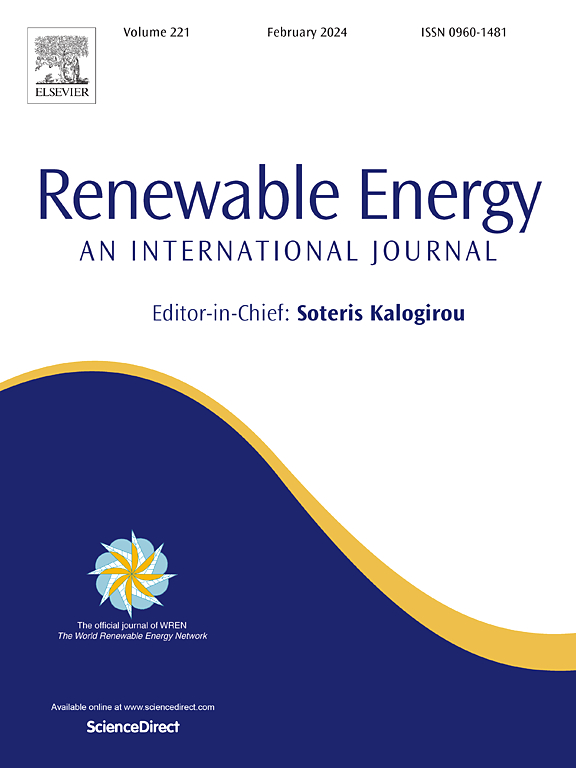Thermal analysis of medium-depth borehole heat exchanger coupled layered stratum thermal conductivity
IF 9
1区 工程技术
Q1 ENERGY & FUELS
引用次数: 0
Abstract
Medium-depth coaxial borehole heat exchanger is a crucial option for low-carbon heating. However, the complex and variable nature of medium-deep formations poses challenges for accurate thermal conductivity determination, and its correlation with heat transfer mechanisms remains unclear. Hence, a thermal conductivity model incorporating temperature corrections and lithological variations was developed and integrated into a layered analytical heat transfer model. Model analysis shows that strata thermal conductivity and temperature both have significant effects on heat extraction. Geological tests and applications based on Shenyang case found that due to good thermal conductivity of rock skeleton (gneiss), low porosity (1.8 %) and no mud, maximum value of 3.34 W m−1 K−1 was observed near 1063.9–1068.8 m. The average thermal conductivity is 2.58 W m−1 K−1. Formations with low porosity, low permeability, and low mud-content are denser, which favors heat conduction, contrary to hydro-geothermal wells that rely on highly porous and fractured formations. The deviation between the calculated results and thermal response test from two regions did not exceed 5.21 %, achieving a high precision. This method enables direct determination of formation thermal properties based on well-logging, providing a convenient and engineering-friendly approach.
求助全文
约1分钟内获得全文
求助全文
来源期刊

Renewable Energy
工程技术-能源与燃料
CiteScore
18.40
自引率
9.20%
发文量
1955
审稿时长
6.6 months
期刊介绍:
Renewable Energy journal is dedicated to advancing knowledge and disseminating insights on various topics and technologies within renewable energy systems and components. Our mission is to support researchers, engineers, economists, manufacturers, NGOs, associations, and societies in staying updated on new developments in their respective fields and applying alternative energy solutions to current practices.
As an international, multidisciplinary journal in renewable energy engineering and research, we strive to be a premier peer-reviewed platform and a trusted source of original research and reviews in the field of renewable energy. Join us in our endeavor to drive innovation and progress in sustainable energy solutions.
 求助内容:
求助内容: 应助结果提醒方式:
应助结果提醒方式:


